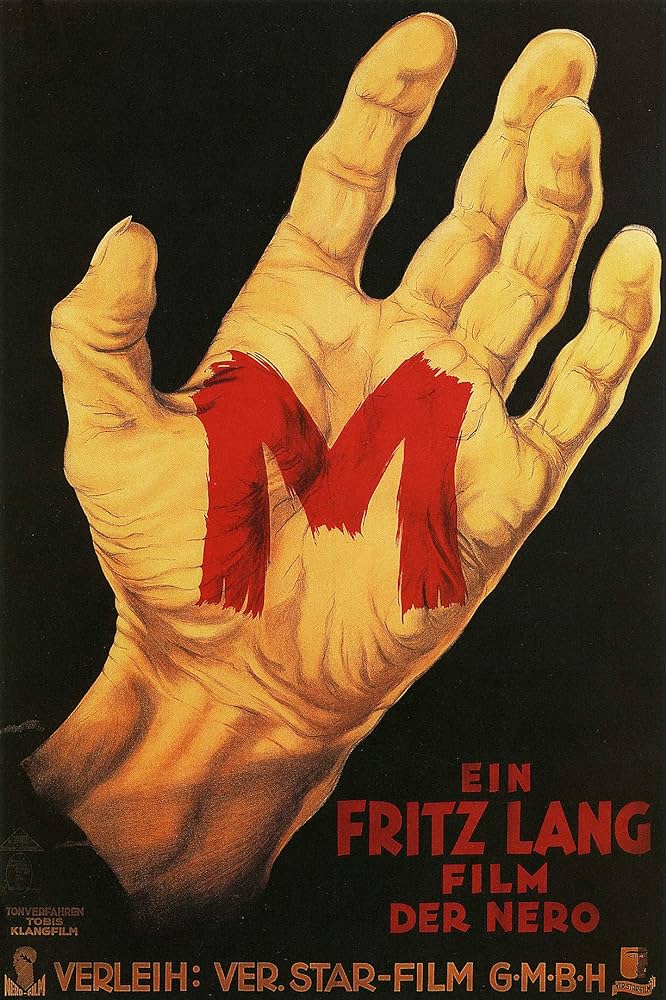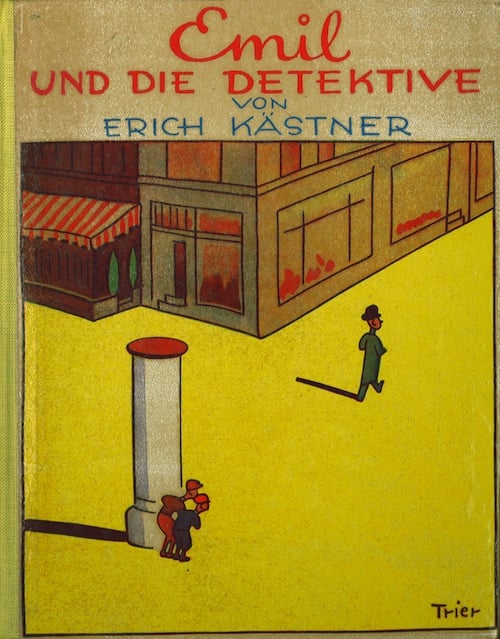FIRST TIME AS COMEDY (3)
By:
March 23, 2024
Some years ago, HILOBROW friend Greg Rowland pointed out that the 1990 movie Dances With Wolves ought to be regarded as a sentimental remake of the 1970 revisionist Western Little Big Man. The series FIRST TIME AS COMEDY will offer additional examples of this recursive (and often, though not always middlebrow) syndrome.
FIRST TIME AS COMEDY: SUPERDUPERMAN vs. WATCHMEN | WILD IN THE STREETS vs. PREZ | EMIL AND THE DETECTIVES vs. M | THE SAVAGE GENTLEMAN vs. DOC SAVAGE | GULLIVAR JONES vs. JOHN CARTER | THE PHONOGRAPHIC APARTMENT vs. HAL | HIGH RISE vs. OATH OF FEALTY | JOHNNY FEDORA vs. JAMES BOND | MA PARKER vs. MA BARKER | DARK STAR vs. ALIEN | SHOCK TREATMENT vs. THE TRUMAN SHOW | JOHNNY BRAVO vs. ROCK STAR | THE FUTUROLOGICAL CONGRESS vs. THE MATRIX | CAVEMAN vs. SASQUATCH SUNSET | LITTLE BIG MAN vs. DANCES WITH WOLVES | THE LAST BLACK MAN IN SAN FRANCISCO vs. BE KIND REWIND | LEN DEIGHTON vs. LEN DEIGHTON.
In Fritz Lang’s 1931 thriller “M,” the serial killer Jans Beckert (Peter Lorre) preys on small children. We witness him intercept one little girl, on her way home from school in Berlin; what he does to her is left to the imagination. In the wake of her disappearance, the police spring into action. The movie is a procedural drama — we witness fingerprinting, handwriting analysis, pounding the pavement.
The police also stage frequent raids to question known criminals. This latter tactic disrupts organized crime in Berlin, which leads the city’s crime bosses to mount their own manhunt for the killer — using beggars as a city-wide surveillance team.
The criminals prove more efficient than the police, capturing Beckert and dragging him to an abandoned distillery to face a kangaroo court. Just as they are about to kill him, the police finally arrive.
Written by Lang and his wife Thea von Harbou (the two of them also wrote the Radium Age proto-sf movie/novel Metropolis), M features such cinematic innovations as the use of long, fluid tracking shots, and a musical leitmotif. It is considered one of the greatest films of all time.
PS: Speaking of first-time-as-comedy, although this was Lorre’s breakout role, it was not his first. Prior to this, he was known as a comedic actor.
Two years before M, the Berlin-based writer, poet, and satirist Erich Kästner, published a children’s book: Emil und die Detektive (Emil and the Detectives). In which hapless schoolboy Emil Tischbein, en route from a small provincial town to visit his grandmother in Berlin, is preyed upon by an unscrupulous adult… who robs him while he’s sleeping. For short we might call Max Grundeis — our story’s predator upon unattended children — simply “M.”
Does Emil go to the authorities? He does not! (The local policeman back home had seen him paint the nose of a local monument red, so he feels that he is a kind of outlaw himself.) Instead, he shares his predicament with Gustav, a local boy, and with his tomboy cousin, Pony Hütchen — one of the great female characters in children’s literature. Kästner also wrote the book that inspired The Parent Trap; helpless children without recourse to competent adult authorities must band together.
A group of two dozen free-range children — the “detectives” — are quickly assembled. Emil and his new friends trail “M” to his hotel; in the morning, they trail him to the bank — and confront him, when he attempts to exchange the stolen money for smaller bills. Once arrested, Herr “M” is found out to be a member of a gang of bank robbers.
The book was unusual, among German children’s literature at the time, for its realistic, hardboiled style. (It’s set in Berlin, not in a fairy-tale world.) And it’s humorous, though not in a condescending way. The moral of the story, such as it is, is comedic in its unsentimentality: “Never send cash — always use postal service.”
The book sold two million copies in Germany alone and has since been translated into some 60 languages. It was one of the first detective stories for children — though to be fair the Hardy Boys’ first book, The Tower Treasure, was published in 1927.
PS: On May 10, 1933, when the Nazis burned “decadent” books in bonfires, Erich Kästner watched his own books being burned in Berlin’s Opernplatz, now called Bebelplatz. (Shortly before midnight, a young woman at the Berlin book burning called out, “That’s Kästner over there!”) Lang’s The Testament of Dr. Mabuse, which he began filming in late 1932, just before Hitler came to power, was banned as an incitement to public disorder.
MORE FURSHLUGGINER THEORIES BY JOSH GLENN: SCHEMATIZING | IN CAHOOTS | JOSH’S MIDJOURNEY | POPSZTÁR SAMIZDAT | VIRUS VIGILANTE | TAKING THE MICKEY | WE ARE IRON MAN | AND WE LIVED BENEATH THE WAVES | IS IT A CHAMBER POT? | I’D LIKE TO FORCE THE WORLD TO SING | THE ARGONAUT FOLLY | THE PERFECT FLANEUR | THE TWENTIETH DAY OF JANUARY | THE REAL THING | THE YHWH VIRUS | THE SWEETEST HANGOVER | THE ORIGINAL STOOGE | BACK TO UTOPIA | FAKE AUTHENTICITY | CAMP, KITSCH & CHEESE | THE UNCLE HYPOTHESIS | MEET THE SEMIONAUTS | THE ABDUCTIVE METHOD | ORIGIN OF THE POGO | THE BLACK IRON PRISON | BLUE KRISHMA | BIG MAL LIVES | SCHMOOZITSU | YOU DOWN WITH VCP? | CALVIN PEEING MEME | DANIEL CLOWES: AGAINST GROOVY | DEBATING IN A VACUUM | PLUPERFECT PDA | SHOCKING BLOCKING.


